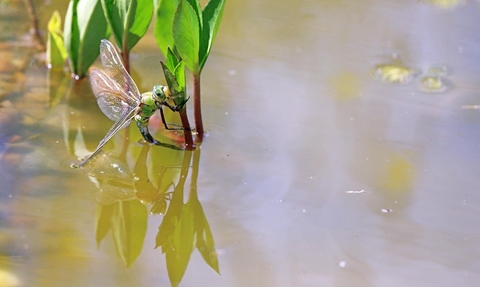
Graham Makepeace-Warne
State of Nature 2024 - Terrestrial Invertebrates
Invertebrates on the Island can be divided by taxonomic group into: Insects, Arachnids, Molluscs and other invertebrates (Worms, Millipedes, Centipedes).
They are found in most habitats; from terrestrial uplands and woodlands to lowland wetlands, meadows and gardens and provide key ecosystem functions such as biomass for species higher up the food chain, material processing (eg. of decaying wood and vegetation), pest control and, crucially, pollination. Over the last 30 years, we have experienced an average decline in the distribution of invertebrate species across the Island, believed to be at least in line with the 13% overall decrease experienced by our closest neighbours in the UK.
In addition to the average decline, there is also a clear migration of species northwards suggesting further evidence of the impact of climate change on these delicate and habitat-specific species.
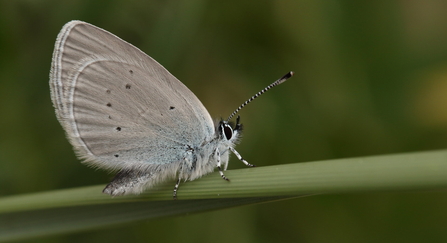
Small blue © Vaughn Matthews
Butterflies
As some of the most visually impressive and easily identified invertebrates found on the Island, butterflies are also key indicators of habitat health and play crucial roles in the food chain as well as being pollinators of plants.
We have 19 recorded species of butterfly on the Isle of Man:
Of these species, x are on the UK red list of greatest conservation concern.
Island-wide, the abundance and distribution of butterfly species has declined greatly. The reduction in ‘green’ areas and habitat destruction, particularly in urban areas, has reduced sightings of Small blue, Comma Meadow Brown and Wall Brown massively.
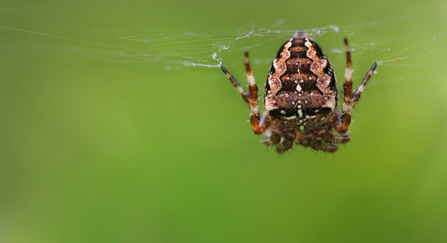
Jon Hawkins - Surrey Hills Photography
Spiders
Spiders are found all over the Island from terrestrial salt marsh, rough grassland, scrub, They strive in a mosaic habitat comprising multiple smaller habitat types. There are a handful of shore species but are otherwise exclusively terrestrial, although we do have one intertidal pseudo-scorpion species.
As they do not have specific plant needs, they are able to occupy many habitats, although most web-spinning species do require a two or three-dimensional structure on which to anchor their web.
The Arachnid class comprises spiders, harvestmen and pseudo-scorpians. There are currently 235-240 species of recorded Manx spiders, (British species 670 – likely we have a few more that are currently undiscovered – particularly tiny money spiders – because they’re so small and difficult to identify.
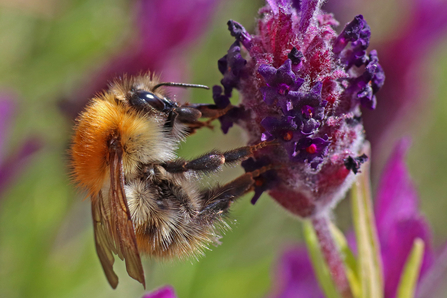
© Graham Makepeace-Warne
Bees
We have 76 recorded species of bee in the Island of the order Hymenoptera, with a further 2 records of species now thought to be extinct.
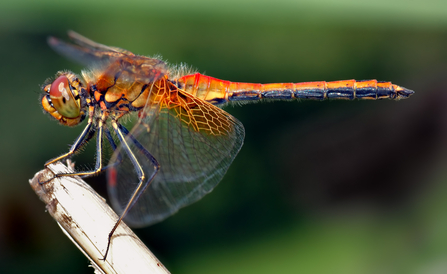
Dragonflies & Damselflies
Of the taxonomic order Odonata, dragonfly and damselfly species are found Island-wide in freshwater & marine environments, with minimal sightings around brackish water. We have 18 species currently recorded, with 11 of these considered Manx resident species.
Their preferred habitats are species specific but they are commonly associated with freshwater ponds, gravel pits, upland bogs and plantation pools.
At present, there is most concern for the upland species: black darter, emerald damsel and common hawker, who are all very habitat-specific, specialist species and hence at most risk of habitat loss, such as the drying up of ponds.
Recorded numbers of brown hawker, associated with gravel pits, have decreased by 75% in the last two years.
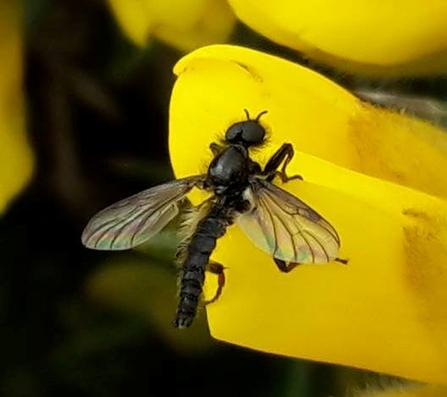
Flies
The order Diptera comprises 8000 species, Hymenoptera & caddis flies.
They are found throughout the Island but most Manx records exist for the north due to a bias of data collectors.
The habitats they colonise include upland peatland, wetlands, grasslands, meadows, , woodlands, sand dunes, marine & coastal/intertidal areas and freshwater.
Manx flies recorded include hover flies, soldier flies, sepsids, clipterates (blow files, parasitic flies), crane flies, social/solitary wasps, solitary bees, saw flies (horntail wasp)
The distribution of our species is comparable to England & Ireland however there are exceptions and oddities such as some solitary wasps and bees that have regional forms - Irish form of leaf cutter bee and wingless solitary wasps, that we have that don’t occur in the UK.
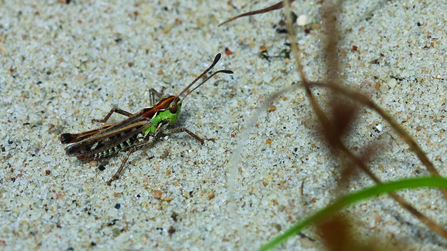
Credit: Wendy Carter
Grasshoppers
One of the very unusual elements of local biodiversity is the occurrence of the Lesser Mottled Grasshopper which has not been recorded anywhere else in the British Isles. It is a protected species. The status and management have been summarised and mapped in: Selman RG and Cherrill, AJ (2018). The lesser mottled grasshopper, Stenobothrus stigmaticus: lessons from habitat management at its only site in the British Isles. Journal of Orthoptera Research 2018, 27(1): 83-89.
